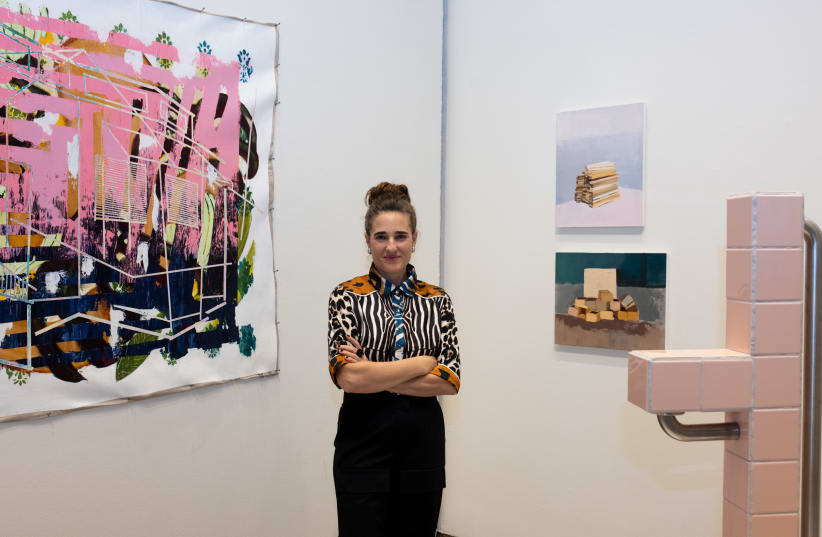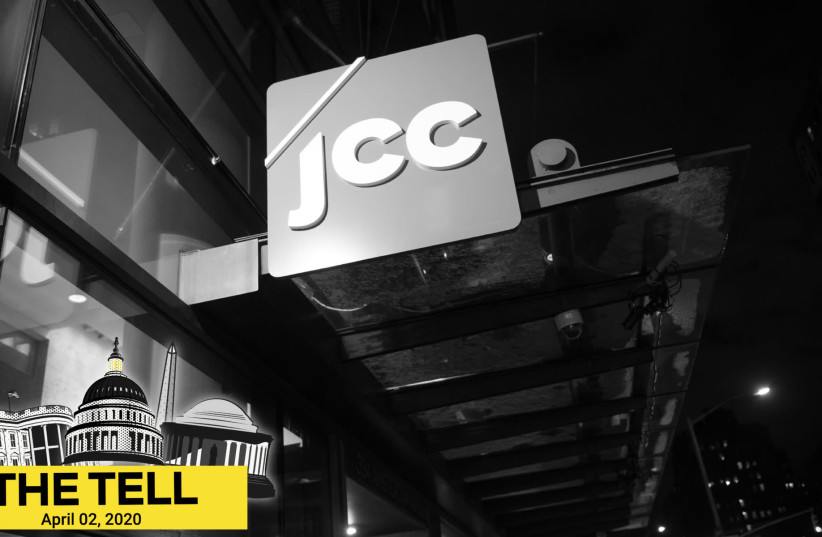NEW YORK – It’s been a state of lockdowns, restrictions and work-from-home orders. For many, the COVID pandemic has made it feel like the walls were closing in, and redefining what home means. For immigrants, the process has at times been doubly difficult: confinement to one’s own physical dwelling, coupled with banishment from the more familiar, spiritual sense of home abroad.
A new multidisciplinary art exhibit, Floating Walls, culls together the works of Israeli artists living in New York City. The exhibition focuses on their personal relationship to migration and reconstituting one’s definition of – and relationship to – home. Additionally, the works on display at the Marlene Meyerson JCC Manhattan allow the viewer to reflect on how the COVID-19 pandemic has impacted one’s sense of place, particularly throughout periods of lockdown in a domestic environment, and in public and private spaces, according to the exhibition’s organizers.
“The exhibit explores this architectural structure that surrounds us. It’s a survey of works made by seven Israeli artists based in New York. They all think about and explore the ideas of migration identity. And, of course, home. Each one has a different way to do it. They use very different materials, use different mediums, but then there is something that goes through the works. And that was what was very interesting for me to explore more,” Aya Goshen, an Israeli native and the Floating Walls curator, told The Jerusalem Post.
“As a New Yorker who has been staying here in the city during the pandemic, I saw a lot of people make adjustments to the new reality. It felt like everybody was in a kind of intersection in their lives and they had to choose the best thing for them to do. And I saw a lot of people relocating, moving, renovating, changing. So, when this (exhibition) came along, I thought a lot about me too. We also changed our apartment and we thought a lot about walls. And I think many people that have been experiencing this – staying at home, looking at the wall, thinking about their living situation – have been thinking about walls and how to move them and how to adjust them and how to adjust to the new reality,” Goshen said.
Gal Cohen, Floating Walls artist, is a visual artist living and working in Harlem. She is a recent alumnus of the AIM fellowship of the Bronx Museum of the Arts and has participated in residencies as well as solo and group exhibitions in Israel, Canada, France and the US. Her paintings offer alternative narratives to demolished historical houses from her hometown, Hadera.
“In Hebrew, it’s the same word (beit) for a house and a home. There is no difference. Your house is your home, and home means the world to us, especially these days when the whole concept of house or home is being rethought and reestablished in our lives. But also, as an immigrant, as a person who left home, left house overseas, I feel that the whole emotional baggage that we carry goes down to the house or the home,” Cohen told The Post, ahead of the exhibit’s opening.
“Whether it’s the people or the memories or the holidays, everything you remember comes down to a physical place where it happened, and that’s where the significance is carried with a house or a home. I created a whole project called “Quarantined Dreamhouse Machine” during the pandemic. I invited people to reenvision or reimagine their homes, while being locked in their physical homes that they were at the moment – like myself in a small apartment in Harlem – with a toddler, not being able to move or to do anything productive. So, definitely during the pandemic, the home is way more significant than what it was. We’re spending way more time in it. And we want to make it more accurate to our own existence and the way we live,” said Cohen.
She displayed a painting interpreting a house nearby her parents’ house in Hadera, formerly owned by a man, Zacharia. Cohen described him as kind. Zacharia passed away a few years ago, childless. The land was subsequently sold and the house flattened.
“I’m going to visit home after more than two years; I haven’t been home because of the pandemic, and I will not see one of the most significant structures that I was surrounded by as a kid throughout my whole life,” Cohen lamented.
“These are very sentimental and physical landmarks in my childhood landscape and in my own life. So, going back to them is emotionally charged, but it feels like a necessity to me to try to re-render those places that, physically, are no longer there, other than in form of these paintings,” she said.
Goshen says she has noticed a pattern among the Israeli artistic community regarding the coupling of the concepts of home and identity.
“I don’t know why, but I feel like a lot of Israelis are exploring architectural structures as symbols for home and as symbols for their identity. And I find it very interesting. I don’t know how to explain the phenomena, but I felt like there is something that is gathered around structures,” said Goshen.
Even the gallery hosting Floating Walls evokes the exhibition’s concept. The exhibition marks the first display in 20 months at the Laurie M. Tisch Gallery, an open, walk-through space off to the side of the entrance to the Marlene Meyerson JCC.
“One thing that was interesting when I curated the show was how the space is built and how it is also in conversation with the idea of walls, because you look at these walls, you look at this space and you think, is it permanent? Can it fold? What’s going on with this layout? So, I thought it’s interesting to be in dialogue with that as well,” Goshen explained.
Floating Walls also features the works of Noa Charuvi, Michal Geva, Zac Hacmon, Dana Levy, Naomi Safran-Hon and Lee Tal. Admission is free of charge and the exhibition is open to the public through the end of February.

